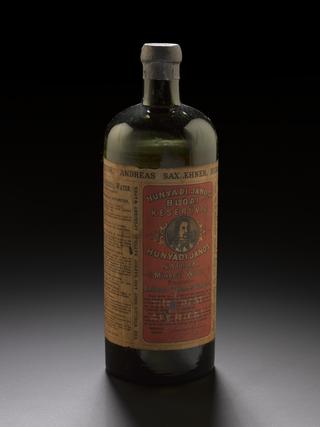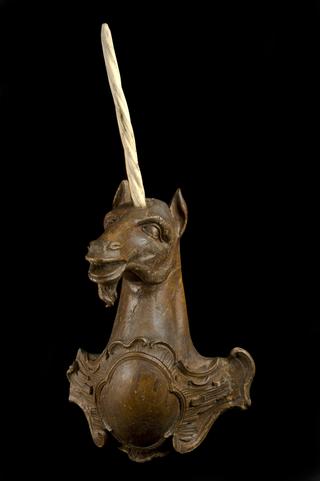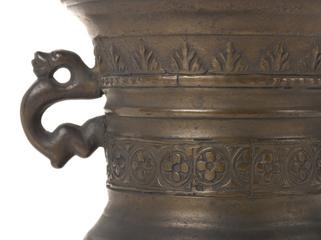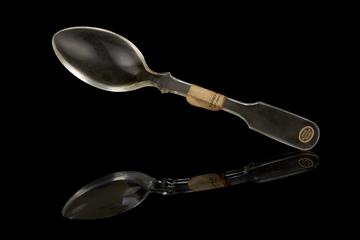
Bronze mortar, Middle East, 1501-1800
- Made:
- 1501-1800 in Middle East

Small cylindrical bronze mortar, projecting rim and foot, base bowed through use, elaborately engraved with an Islamic style pattern, Middle East (?) or North Africa (?), 1501 to 1800
Mortars were used as a bowl to crush, grind and mix ingredients using a pestle. The powders would be added to syrups and form the base of tablets. Drug preparations have been made in this way for centuries in the home and by apothecaries and pharmacists. The Islamic-style design on this mortar has been worn away. See how it is unbalanced at the base? The foot of the bronze mortar has been bowed, again because of use. It is unclear exactly where this object was made although the Middle East or North Africa are possibilities.
Details
- Category:
- Pharmacy-ware
- Collection:
- Sir Henry Wellcome's Museum Collection
- Object Number:
- A604813
- Materials:
- bronze
- Measurements:
-
overall: 74 mm x 78 mm, 0.59kg
- type:
- mortar




